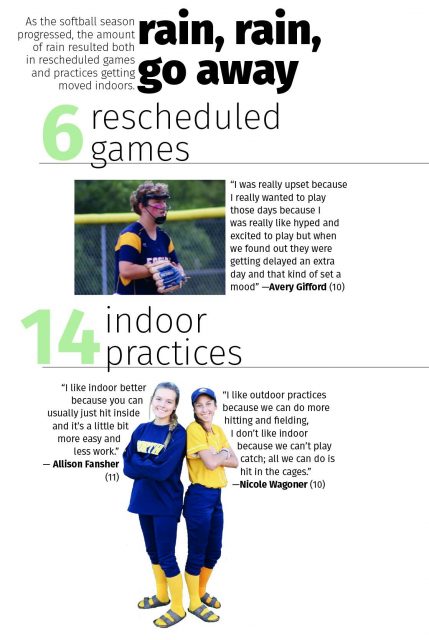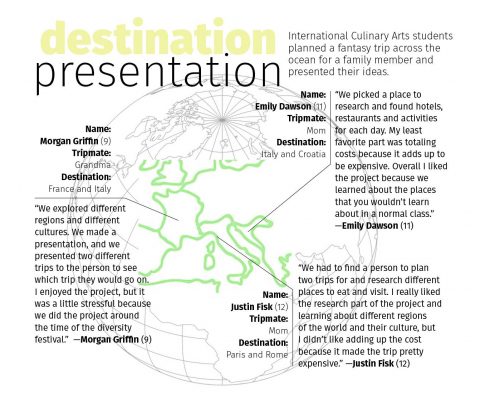Let’s talk about quick reads. First of all, what is a quick read? You may call them another name – sidebar, secondary coverage, mod, even side salad. No matter what they are called, they have an objective; tell a story or give more information about a story in short, digestible bits.
Given that the readers of 2020 want their information in milliseconds, quick reads allow for strong reporting and good design. They keep readers engaged on the spread longer, allowing for a stronger affinity to the book.
Take the reader’s eyes on a predefined journey. Often times, the dominant photo and several semi-larger photos just do not provide the visual info that a reader needs. A well-designed, well-written quick read will inform and attract attention. Those quick reads need some sort of structure. In other words, stop putting a kid up against the lockers, taking a picture and asking them about their favorite pizza topping! Each quick read should incorporate all design elements entire spreads use.
 Each quick read should send a clear message. It can supply additional facts and figures, it can supply strong quotes that were not used in the original story, it can enhance. And the design should definitely be visually appealing. Use some sort of inspiration piece when designing. Look to the pros. Look at lots of magazines and web sites.
Each quick read should send a clear message. It can supply additional facts and figures, it can supply strong quotes that were not used in the original story, it can enhance. And the design should definitely be visually appealing. Use some sort of inspiration piece when designing. Look to the pros. Look at lots of magazines and web sites.
Strong quick reads are accurate and well researched. Do not make up facts and figures. Do not make up quotes. Do your homework! You are journalists.
A strong sidebar has all elements of a strong spread design:
- A headline (remember your visual hierarchy). Create a mini headline for your quick reads. Use the same fonts, colors and sometimes graphics. Just simply make them 2/3 the size of the main headline. Just as with the main headline, incorporate a secondary headline that will give the reader more information.
- A dominant element. Just like on your page, something should be larger than the other elements in the quick read. This could be a mug, cutout or even larger numbers. When using quotes or numbers, give appropriate information. Do not go overboard. Get the right quotes and get the right numbers/facts. Narrow it down to manageable information.
- Thoughtfully planned content. Finally, try to answer these questions:
- Can you break down the story into smaller chunks?
- What visuals do you have?
- How can you tell the story quicker?
- How can you best give bits of research?
- What is story and what is secondary coverage?
- Do I have some sort of inspiration piece?
Making quick reads that enhance a story/spread/theme will also enhance the readability of the yearbook. It incorporates your journalistic skills and causes the book to be visually and verbally representative of 2020 at your school.





